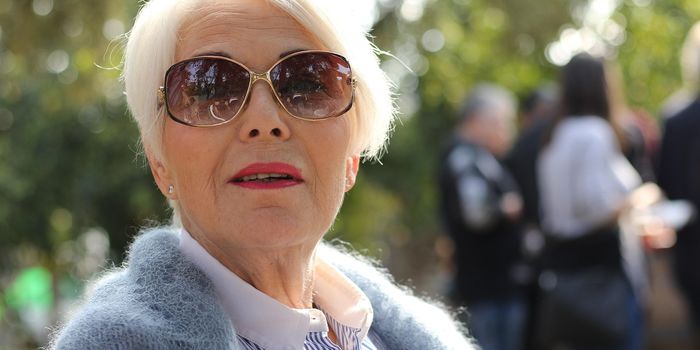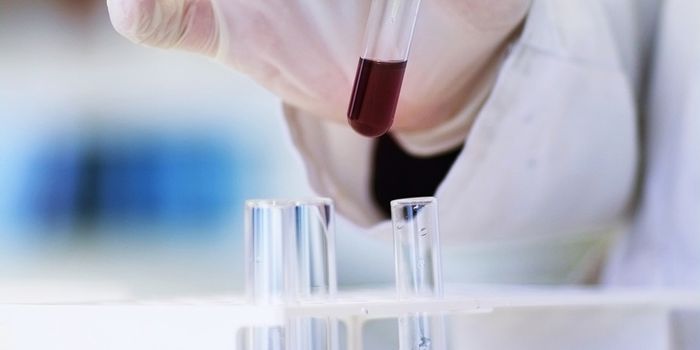Cell & Molecular Biology
Love Hormone Promotes Group Lying, Researchers Say
Trending
/
Cell & Molecular Biology
/
Oldest Woman on Earth Helps Reveal the Secrets of Life and Death
MAY 20, 2014 12:00 AM PDT
Share
Oldest Woman on Earth Helps Reveal the Secrets of Life and Death
 When Hendrikie van Andel-Schipper died in 2005 at the age of 115 she was the oldest person in the world. A research team, led by Henne Holstege of the VU University Medical Center in Amsterdam studied her blood and tissues in an effort to understand the reasons for her longevity. The study results, published in the journal Genome Research seem to indicate our lifespan is limited, curtailed by our cells' finite ability to divide.
When Hendrikie van Andel-Schipper died in 2005 at the age of 115 she was the oldest person in the world. A research team, led by Henne Holstege of the VU University Medical Center in Amsterdam studied her blood and tissues in an effort to understand the reasons for her longevity. The study results, published in the journal Genome Research seem to indicate our lifespan is limited, curtailed by our cells' finite ability to divide.We're born with up to 20,000 blood-producing hematopoietic cells. These renew themselves every 25 to 50 weeks by dividing and creating two daughter cells. The cells differentiate to generate various types of blood cells. About 1,300 of these are dedicated to producing new white blood cells in the bone marrow. But, although Andel-Schipper was very healthy right up to the time of her death -- her cognition was clear and her circulatory system was disease-free - most of her white blood cells originated from just two stem cells. So, in theory although Andel-Schipper's general physical and mental health could have allowed her to live for many more years, her lifespan was limited by the cells' ability to divide. Cell division could not go on forever and her body eventually could not keep on regenerating tissues and cells, such as blood.
This raises a question. "Is there a limit to the number of stem cell divisions, and does that imply that there's a limit to human life?" asks Henne Holstege of the VU University Medical Center in Amsterdam, the Netherlands, who headed the research team. "Or can you get round that by replenishment with cells saved from earlier in your life?" she says.
More evidence for the stem cell fatigue came from observing that van Andel-Schipper's white blood cells had drastically worn-down telomeres - the protective tips on chromosomes that shorten each time a cell divides.
The study results raise the science-fiction like possibility of rejuvenating ageing bodies with injections of stem cells saved from birth or early life. These cells would be substantially free of mutations and have full-length telomeres. "If I took a sample now and gave it back to myself when I'm older, I would have long telomeres again - although it might only be possible with blood, not other tissues," Holstege says.
In fact, an experiment by a team led by Amy Wagers of the Harvard Stem Cell Institute in Boston showed that the blood of young mice seemed to rejuvenate ageing blood stem cells in the bone cells of older mice.
In studying Andel-Schipper's blood, researchers also found more than 400 mutations in her white blood cells, but these did not cause disease or otherwise adversely affect her. These mutations, called somatic mutations, because they are not passed along to offspring, were tolerated by her body. The absence of disease and cancer suggest that Andel-Schipper had a better than average capability for repairing or aborting cells with dangerous mutations. Holstege hopes to find clues in genes that protect against cognitive diseases, such as Alzheimer's by comparing Andel-Schipper's DNA to that of much younger people who die of the disease.
You May Also Like
MAR 02, 2025
Cancer
Breast cancer remains the most frequently diagnosed malignancy in women in the United States, with nearly 317,000 new ca
...
Written By:
Katie Kokolus
MAR 20, 2025
Cannabis Sciences
Scientists increased the bioavailability of CBD in in-vitro models. The findings were published in the International Jou
...
Written By:
Annie Lennon
MAR 21, 2025
Cell & Molecular Biology
Ultraviolet (UV) radiation is known to cause DNA damage, and while that damage may accumulate and eventually lead to dis
...
Written By:
Carmen Leitch
MAR 23, 2025
Genetics & Genomics
In pregnancy, the placenta is the link between mother and child, and this prenatal environment can have huge influences
...
Written By:
Carmen Leitch
APR 07, 2025
Cell & Molecular Biology
When the spine or spinal cord do not form properly, a disorder called spina bifida arises...
Written By:
Carmen Leitch
APR 17, 2025
Immunology
The immune system is comprised of various cells that work in concert to fight off disease. The two immune responses, inn
...
Written By:
Brian G. Morreale
Loading Comments...








